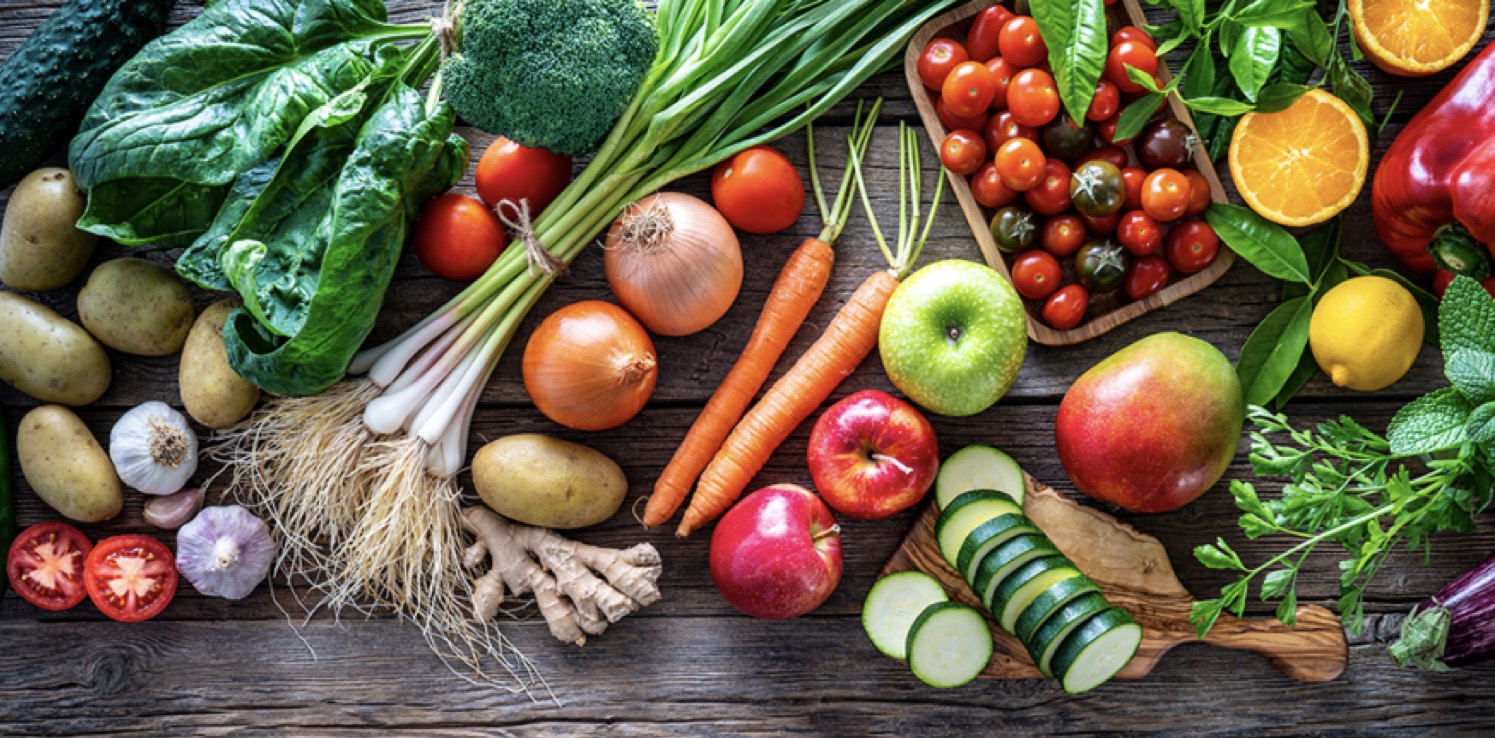Vegetarianism

Yoga promotes vegetarianism
Prana is also described as ‘life force’ and the force of consciousness. Through breathing, stretching and the sustained, mobile postures, prana can flow to and heal where previously there was a lack of energy. This can create an emotional release and clearing and, indeed, bring about a change of thought, a change of heart. As prana engages with the consciousness of our ten trillion cells, new states of being are felt, established and centered. With regards to the foods we eat, the lack of life force of dead animals (sorry to be blunt ?) is felt as drawing us back to more contracted states of being rather than openness, love and light! Below is a guide to transitioning to vegetarianism!
Vegetarianism – How to Make the Best Possible Transition!
The key is: Gentle DETOXIFICATION and ENERGIZING!
When eating, spare a thought on how easily you may be able to eliminate this food again!
Enzymes are the “sparks of life”. These energized protein molecules play a necessary role in virtually all biochemical activities that go on in the body. They are essential for digesting food, for stimulating the brain, for providing cellular energy and for repairing and detoxifying all tissues, organs and cells. Life as we know it, could not exist without the action of enzymes, even in the presence of sufficient amounts of vitamins, minerals, water and other nutrients. The digestive enzymes – amylase, protease and lipase – are secreted along the gastrointestinal tract and the metabolic enzymes set off energy production and detoxification within the cells. The body manufactures a supply of enzymes but also obtains enzymes from food. Even low heat destroys most enzymes in food, so to obtain enzymes from the diet, one must eat raw foods.
To “lighten” the load on the body, it is a good idea to incorporate some Food Combining Principles. Eat fruit on its own on an empty stomach. Keep complex starches (carbohydrates) apart from complex proteins and have both in the presence of ample veggies.
Animal foods create an acidic bloodstream, an environment within which disease strives. Vegetables render the bloodstream alkaline. In the process of transitioning, you may have some cleansing symptoms, e.g. fatigue or aches and pains. Persevere, this phase confirms you’re heading in the right direction! Alkalinity creates a physiological sense of peace, even bliss!
Supplements
Spirulina originally grew as an indigenous water plant in Lake Victoria and was liberally consumed for its health benefits. It is full of readily absorbable vitamins, minerals and proteins. The chlorophyll content aids in detox. Chlorella is another blue-green sweet-water algae even higher in protein – recommended for vegetarians.
Green Supplement: there are many great products on the market, from THE REAL THING to PURE SYNERGY.
It is equally good to invest in a good juicer – we recommend a ‘masticating’ (slowly grinding) juicer (the OSCR or MATSTONE) and make chlorophyll-rich juice (see recipe below).
Aloe Juice heals the entire digestive track and specifically releases toxins from the folds and pockets in the colon.
Psyllium Husk (aka Isabgol, Fleaseed, Plaintain Husk, from India) is a soft fibre that cleanses the digestive system. It swells up within and carries along with its elimination digestive debris. Take 1 heaped ts in the morning in a tall glass tepid water and follow immediately with another glass of water. (If taken any other way it can give constipation.)
Cellulose and Hemicellulose are two types of indigestible vegetable fibre, found abundantly in fruit & veg. They have anti-cancer properties and generally assist the metabolism in flushing out even ancient toxins.
Minerals are needed before the body has the ability to absorb vitamins well. “Concentrace” is a good supplement, but even spices are a useful source of minerals and trace elements. Recommended are: Turmeric (Haldi, Borrie), Cinnamon, Black Pepper, Red Chilli, Green Chilli, Cumin, Coriander, Cardamom, Fenugreek, Hing (Asafoetida), Cloves… Fresh spicy foods include: Ginger, Onion and Garlic. Spices greatly enhance the nutritional value of a food! (and they add spice to life!)
Highly Recommended Foods
Apples, Bananas, Pears, Guavas, Pineapples, Pawpaw, Grapefruit, Lemons
Broccoli, Celery, Mielies, Carrots, Cabbage, Green Leafy Veg, such as Spinach, Lettuce, Fresh Herbs such as Parsley, Dill, Watercress, Beetroot.
Remember to have large amounts of these – their healing power is undisputed, but they are only a food, not a supplement, so they need to be consumed in good quantity to have a noticeable effect!
Protein
As a vegetarian we can find our protein in many places:
Nuts, Seeds (Sunflower, Sesame, etc.), Avocadoes, Beans (Peanuts are botanically a bean, also) Soya – especially soyamilk, tofu and other soya products, Dairy Products.
Fats
Cold-pressed oils are recommended in preference to “heated” oils as the body does not find them digestible. What does not digest well, becomes toxic.
In the case of olive oil, cold-pressed is called “Extra Virgin”. Yogically, ghee (clarified butter) comes highly recommended. It is a pure fat that does not congest but rather lubricates the body from within and gives a lot of power. It is highly concentrated and can be consumed in very small amounts. It is preferred over margarine which is an entirely synthesized “factory fat”.
Cold-pressed Linseed (Flaxseed) Oil provides essential fatty acids that help create the body’s own prostaglandins, steroids and hormones.
From health point of view, as a budding vegetarian, it is not a bad idea to take your time, say 6 months – 1 year, in completing the transition – though there are always those folks who happily take the plunge overnight!
Lacto-ovo vegetarians take eggs, however, in a yogic context, eggs are high in hormones that are alien to our bodies and are understood to interfere with pituitary functioning. Medical research has shown that more than 50% of people have abnormal pituitaries.
Terminology
Vegetarian – a general term that relates to a person who will not consume anything that would fly, swim or run away if one tried to catch it for one’s supper. In other words, anything that has a mother…
Lacto-Vegetarian – a vegetarian that consumes milk products
Lacto-Ovo Vegetarian – a vegetarian that, in addition to everything else, consumes dairy products and eggs. (N.B. Airlines generally provide lacto-ovo meals when you order vegetarian. If you don’t want eggs, order a VEGAN MEAL or ASIAN VEGETARIAN)
Vegan – a vegetarian who will not consume anything that comes from an animal, including honey. A vegan also does not wear clothes made from leather.
Here is a great recipe for Green Juice
Turnip Leaves (and the odd turnip)
Radish Leaves (and the odd radish)
Beetroot Leaves
Carrot Tops
Spinach
Celery
Cucumber
Mint
Fennel (incl tops)
Cabbage
Chicory 80%
Apple, Ginger, whole lemon 20%
Mix 50 : 50 with water
Add your 3:6:9 omega oil to be able to absorb the fat-soluble vitamins A, B, C and D in this juice.

